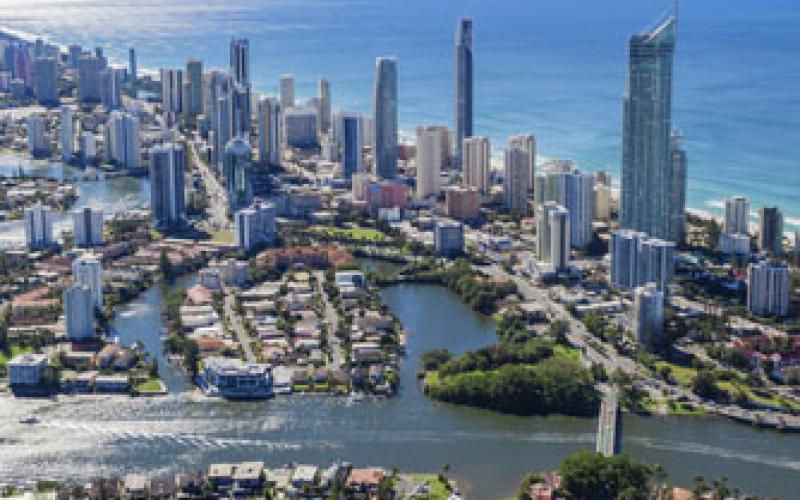Sea rises and high rises: A model approach

Sea rises and high rises: A model approach
Integrating sea level rise projections with cost-benefit analysis can provide guidance in assessing the trade-offs between coastal development and conservation objectives.
Original Paper:
Mills M, Nicol S, Wells JA, Lahoz-Monfort JJ, Wintle B, Bode M, Wardrop M, Walshe T, Probert WJM, Runge MC, Possingham HP, and Madden EM. (2014) "Minimizing the Cost of Keeping Options Open for Conservation in a Changing Climate." Conservation Biology. Pg. 1-8.
DOI: http://dx.doi.org/10.1111/cobi.12238
The dialogue around climate change has shifted. While mitigation efforts continue to be crucial, adaptation to future climate conditions entered the conversation for scientists, city planners, farmers, and protected area managers alike in recent years. Urban planning increasingly centers on weathering the storm, both proverbial, and increasingly literal. Adaptation is an especially important consideration for coastal communities, which stand to lose much of their land, drastically altering their functioning and potentially displacing tens of millions of people.
Practitioners engaged in coastal planning are therefore looking to projected future conditions to inform present action. One method for safeguarding biodiversity into the future is to maximize flexibility in addressing unknown future conditions by proactively setting aside land so that ecosystems have undeveloped space for migration as conditions change. Figuring out how much land to set aside can be an uncertain task, especially as maintaining broad conservation flexibility limits development potential, locking up land that could otherwise be built upon. A clearer picture of future conservation needs and associated costs in terms of lost development potential can help inform decisions about how much land needs to be set aside and how much can be given up without sacrificing flexibility.
One way to tackle this uncertainty is to use current data to model future scenarios that can inform decision-making. In a study published in Conservation Biology, researchers from the University of Queensland, the University of Melbourne, the Department of Sustainability, Environment and Water, Population and Communities, and the U.S. Geological Survey investigated the amount of development that could be realistically permitted without substantial losses to either conservation or future development. Taking an analytical approach grounded in economics, researchers developed a model that compared the extents of land set aside for an idealized mangrove ecosystem to generalized development across low, average, and high sea level rise scenarios based on predictions by the Intergovernmental Panel on Climate Change. The team then analyzed the costs and benefits associated with each scenario. The development limit was initially set at the predicted extent of sea level rise, which achieved no conservation benefit because development directly abutted the high tide line, and subsequently moved back from there. Constraining the limit of development rapidly achieved substantial conservation benefits with only moderate cost to development, but only up to a certain threshold. Past that threshold, continued restriction of the limit of development led to development losses with no concurrent conservation benefit. Thus, being overly cautious in setting aside land for conservation does not add conservation benefit while resulting in lost development potential according to the model. Small constraints in total development extent, on the other hand, have a disproportionate positive effect on the conservation benefit obtained. For example, under the highest sea level rise projections, forgoing only 14% of development benefit potential resulted in retention of 98% of conservation benefits from protected mangrove.
The model developed for this study was highly simplified, so any conclusions drawn from it must be taken with a grain of salt. The real consequences of sea level rise will be much more complex than those modeled and, in practice, multiple decisions will be made over time about the boundaries between conserved and developed areas. However, context-specific complexity can be added to the model. The aim of this study was not to make an accurate prediction for a specific situation, but to develop a tool to aid in decision-making. The strongest argument is not that conservationists need to take development costs into account when arguing for a particular conservation strategy, but that identifying, articulating, and analyzing uncertainties can allow for a clearer presentation of management options. Using ecological and economic models to explore potential scenarios can help inform policy decisions despite uncertainty around precise effects or their magnitude.




